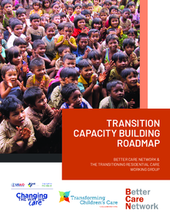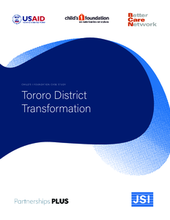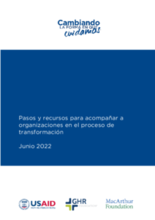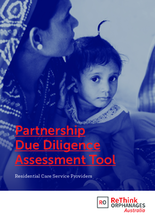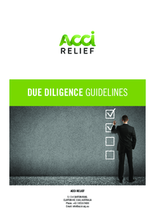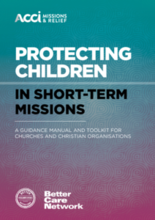Understanding baseline strengths, risks, and readiness
To plan the way forward, it’s important to have a clear picture of the starting point of the organisation and of the residential care services in operation.
The aim of this step is to conduct a baseline assessment or organizational review. This will review how adequate existing structures, systems, policies, procedures, staffing and resources are are to support a safe transition.
Assessments or reviews help identify the organization’s strengths and weaknesses and where risk and tension might stem from. They assist in understanding what organizational strengthening activities may need to be factored into the strategy to safely proceed with transition.
These reviews will also help organizations and their partners determine what the most appropriate end goal is; full transition or safe closure. It can also help inform organizations’ decision making about what post transition services they are well placed to run, if full transition is the goal.
This step is concerned with organizational assessment (where transition is being guided by organizations or individuals providing overarching technical support) or internal review (where the transitioning is being self-managed by the transitioning organisation).
Assessments or internal reviews conducted throughout this step may include:
- An organizational governance and accountability audit/review. This helps organizations determine whether there are sufficient governance structures in place to ensure strong accountability and to appropriately manage any issues that might arise throughout the transition or whether governance strengthening is required. This evaluation/assessment may look at aspects such as:
- The legal status of the organisation and registration status of services/programs
- The governing structures and governing instruments (constitution, by-laws, board structures)
- The financial systems and processes, including ownership of key assets such as land and buildings, status of bank accounts, budgets and funding agreements and financial audits of expenditure.
- Key policies and procedures, including those that pertain to staff, employment and complaints handling.
- A child protection and safeguarding assessment/review. This helps organizations determine whether their current child safeguarding procedures are sufficient, noting the increased complexity of safeguarding throughout a transition. It allows organizations to identify areas for strengthening to ensure clear expectations are set for how staff and stakeholders interact with children during the transition process. This assessment/review may include:
- Reviewing existing child protection policies
- Reviewing codes of conduct
- Conducting new child protection risk assessments
- Reviewing child protection reporting mechanisms and investigation and response procedures
- Training and awareness for leadership, management, board members, volunteers, consultants, staff and children
- Review of any historical or unresolved issues
- Reviewing documentation and record keeping procedures
- Stakeholder and partnership analysis/review. This looks at partnership dynamics (between implementers and supporters) and helps organizations determine how best to engage with various partners in the lead up to and throughout the transition and how to manage relationships, partner expectations and minimize the likelihood of tension occurring. This analysis/review may include:
- Identifying the full range of partners, their roles, and how transition will affect them
- Reviewing the history of partnerships (their origins and how they have evolved over time) and how this may affect the nature or timing of engaging certain partners in the discussion around transition and their expectations
- Evaluating the nature of partnerships, and the degree to which they are informal and relational versus formalized and contractual. This should also explore what agreements are in place and what bearing agreements may have on transition
- Identifying additional donors (for those providing technical support to third party organizations undergoing transition) and engaging them in the discussion on transition.
- Residential care service assessment/review. This helps organizations develop a clear picture of the standards of practice within the residential care centre, the degree to which elements that enable transition or more specifically reintegration of children in family-based care are already in place or need to be developed and factored into the strategic plan. This may include assessing/reviewing:
- Compliance with government registration and licensing requirements
- Compliance with national minimum standards
- Case files and children’s documentation
- Policies and practices pertaining to:
- Gatekeeping (assessment and best interest decision making on admission, reintegration and exiting care)
- Child to caregiver ratios
- Social work and practice standards for caring for children, including care planning and reintegration
- Life skills and other training
- Volunteering and visiting
- 'Family connection and relationship
- Human resources/staffing (qualifications, expertise, training)
- Assets and the asset inventory
- Organizational capacity assessment/evaluation. This evaluation helps organizations determine how well placed they are to independently outwork the various phases of transition and where increased internal capacity (new staff) or external support (consultants/technical partners) might be required. It also helps organizations think about what post transition services they are well placed to offer. The types of assessments that might be conducted include:
- Strengths, weaknesses, opportunities, threats (SWOT) assessments
- Organizational Capacity Assessment Tools (OCAT)
- Human resources review – what staff exists where (workforce mapping), capacities, roles in transition
- Key Factors Analysis (PESTLE)
- Review and/or documentation of the organization’s history and origins. This review/assessment is relevant to those providing technical support to a third-party organisation or where new leadership has been brought into an organisation to facilitate transition. Understanding the history and story of origin can help practitioners develop the right approach, understand the sensitives and determine how to manage the transition whilst respecting the legacy of the organisation. It may include:
- Inviting key stakeholders (founders, previous leaders, directors etc) to share the founding story of the organisation
- Reviewing historical reports and documents.
- Creation of a timeline of the organization’s history
Once these individual assessments/reviews have been conducted, the organisation or technical partner will need to analyze the findings to understand the implications for the transition strategy. The Transitioning Models of Care Assessment Tool can be used for this purpose.
Key milestones associated with the step are, the organization’s key stakeholders and/or technical support providers, have:
- A clear baseline understanding of the operating situation of the organisation and residential care service undergoing transition.
- Visibility of the risks that need to be mitigated and managed in the approach to transition.
- A decision as to whether the organisation is best placed to pursue full transition or safe closure.
- A range of strategic actions identified that need to be incorporated in the strategic plan.
Resources
Displaying 1 - 9 of 9
This study is complementary to the alternative care assessment and explores the perceptions and attitudes of policymakers, judges, and frontline child protection practitioners toward alternative care in Bangladesh. It finds broad consensus that children thrive best in families, yet institutional care remains the default due to the lack of structured alternatives.
This document outlines a capacity-building roadmap for scaling up the transition of residential care services. It is an interagency resource developed by Better Care Network and the Transitioning Residential Care Working Group (Transforming Children's Care Collaborative).
Based in Uganda, Child’s i Foundation successfully transitioned their residential programs before deciding to expand their vision and seek to bring about care reform to the entire district of Tororo. Partnering with the district level government and several CCIs, Child’s i Foundation carried out an extensive analysis and assessment of the Tororo region which provided information to guide the ensuing transitions of CCIs throughout the region.
Este documento está diseñado para orientar a las personas u organizaciones que están apoyando un proceso de transición para pasar de proporcionar atención residencial a un modelo que promueva la atención familiar y comunitaria. El documento está diseñado en torno a las Fases de la Transición de Better Care Network. Se basa en el trabajo que Changing the Way We Care ha realizado en los últimos años para apoyar a diferentes proveedores de atención residencial, tanto religiosos como laicos, en su propio proceso de transición. Hay ejemplos y enlaces a herramientas relevantes, mensajes y actividades sugeridas que pueden utilizarse para apoyar las diferentes fases del proceso.
The Organizational Governance and Accountability Checklist is designed to help determine whether an organisation providing residential care services, and the principal donor (where the principal donor represents an entity), have sufficient governance and accountability structures in place to mitigate, manage and address risks or issues that may arise in the course of transitioning the model of care.
The Partner Due Diligence Assessment Tool was developed specifically for charities seeking to partner with overseas organisations who provide residential care services for children. It is designed to help you determine whether your partner or prospective partner is operating in accordance with standard notions of good practice and international norms.
Advancing Partners & Communities (APC) is a five-year cooperative agreement funded by the U.S. Agency for International Development beginning October 1, 2012. The project focuses on advancing and supporting community programs that seek to improve the overall health of communities and achieve other health-related impacts, especially in relationship to family planning. APC provides global leadership for community-based programming, executes and manages small- and medium-sized sub-awards, supports procurement reform by preparing awards for execution by USAID, and builds technical capacity of organizations to implement effective programs.
The purpose of these guidelines is to equip you with a tool that helps you build a sound understanding of an organisation so that you can make a well-informed decision about whether or not to establish a partnership with them. The check can also reveal to you other ways in which you can support the project achieve it’s goals – that may be helping them access additional training for the staff, sending your accountant to help them set up good cash management systems or providing the funding for them to hire an experienced staff member.
The Child Protection in Short-Term Missions Manual and Toolkit has been produced by ACC International Missions and Relief. It has been designed for those who are passionate about missions and engaging people in missions through short-term teams, who pursue excellence in all they do and who are committed to pursuing God’s heart for children and vulnerable members of society in the context of global missions.


